Studio Rec: 002 (Live from Japan!)
Our Architectural Designer's Curated Guide to Japan (through a designer's lens, of course).
Welcome back to Studio Rec- an ongoing monthly series, that highlights any and all current recommendations from our team in the studio. This month’s Studio Rec is a very special one, featuring a takeover from our Studio’s Architectural Designer, Sera Ghadaki, who just came back from several weeks of travel in Japan.
I recently spent two incredible weeks traveling in Japan with a natural focus on exploring local shops, fashion, food, and art. Here’s what made my Studio Rec — the spots I’d suggest in a heartbeat, broken out by city (and island): Kyoto, Osaka, Naoshima, Teshima, and Tokyo.
Favorite general design observation: Tiles, old and new! There were countless examples of beautiful tile work cladding building facades and houses of all scales, lining the awnings of machiyas (traditional townhouses common in Kyoto), and, of course, featured in meticulously designed interiors.
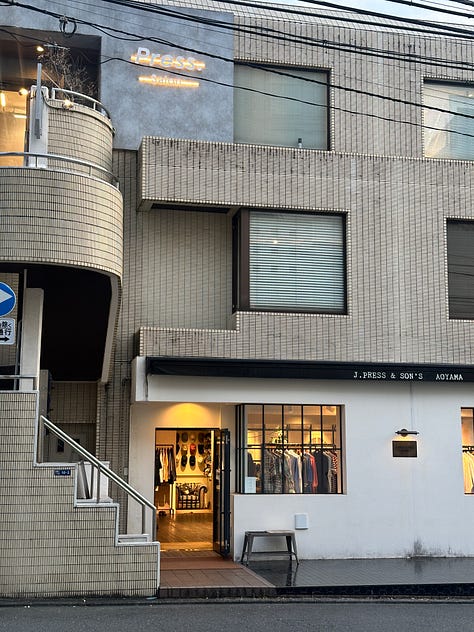



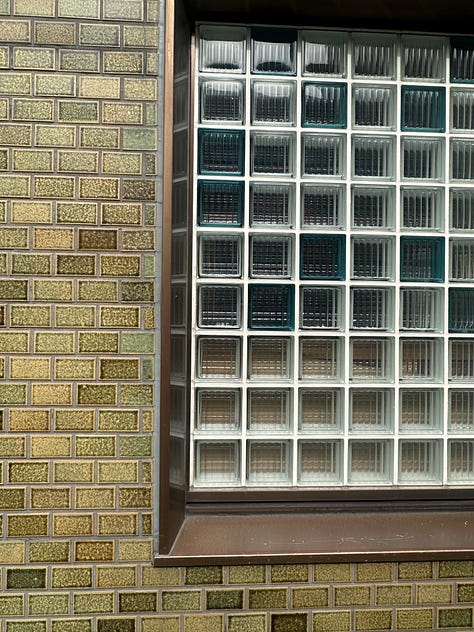
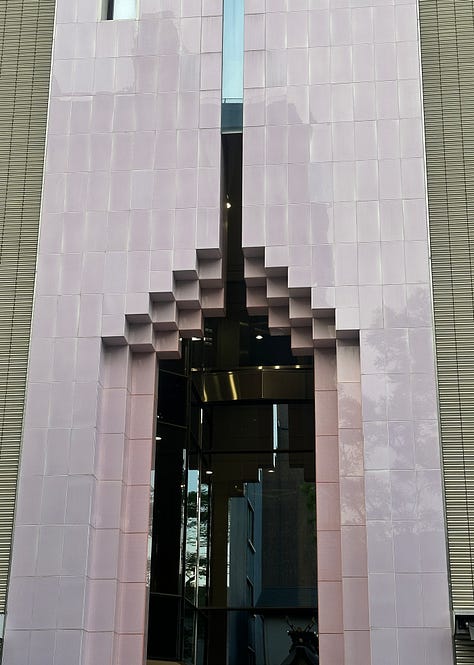
Kyoto
There were many unique shops (and shop interiors) within walking distance in the Nakagyo ward - I’d recommend an afternoon through the neighborhood and seeing what catches the eye.
APOC-Able Issey Miyake: A fairly new experimental offshoot brand with intricately sculpted garments, housed in a 200-year-old historical townhouse. A must-visit for Issey Miyake fans.
Kurasu Ebisugawa: The ceremonial matcha and hojicha at this café were a highlight of the trip.
T.T (Taiga Takahashi): Part art gallery, part boutique with a tea room upstairs. The space was serene, filled with incense and beautifully crafted clothes that invited you to linger - I brought some incense home as a reminder.
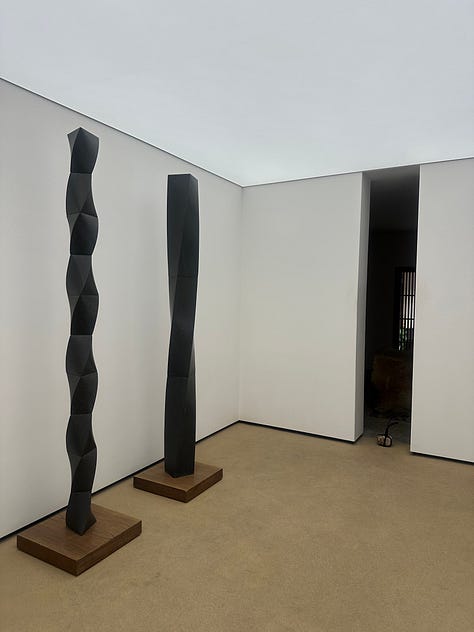
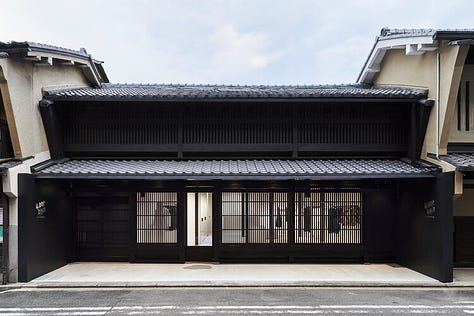


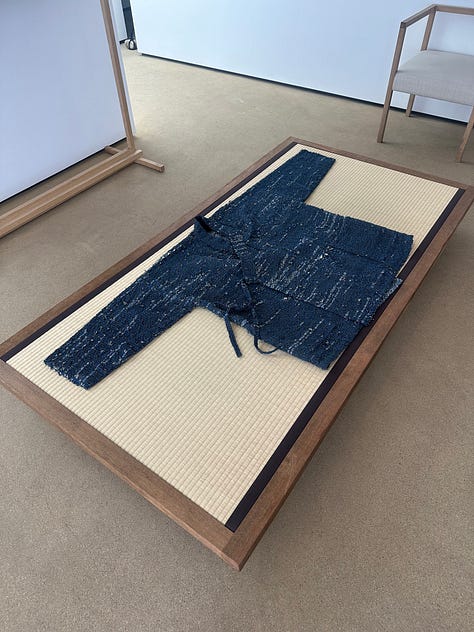

The APOC-Able shop (photo source: Masaya Yoshimura) and the interior of T.T.
Osaka
Port Store & Port Furniture: Port Store showcases a mix of Eastern contemporary designers and Western vintage, including an amazing Margiela-era Hermès collection and Elsa Peretti jewelry in nostalgic interiors. The vintage furniture throughout the store is sourced by their sister shop, Port Furniture, which I sadly didn’t have time to visit — but it saved me from trying to figure out how to crate furniture home!
Essential Store: When I saw this shop recommended, most descriptions didn’t want to say much so as not to spoil the surprise, and I get it now. If you’re in the area, do check it out. Without giving too much away, the deadstock fabric and notions shop-within-a-shop called Yuge Fabric Farm was fantastic. I left with vintage mother-of-pearl buttons, a strawberry-shaped pincushion, and fabric made in Japan that I plan to turn into pillows.
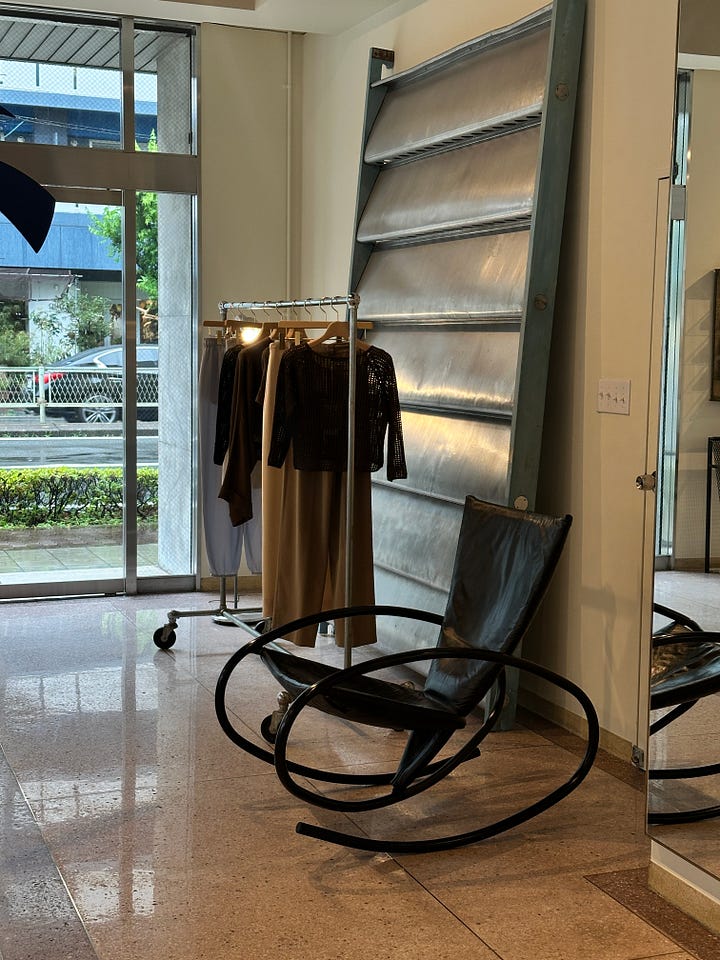
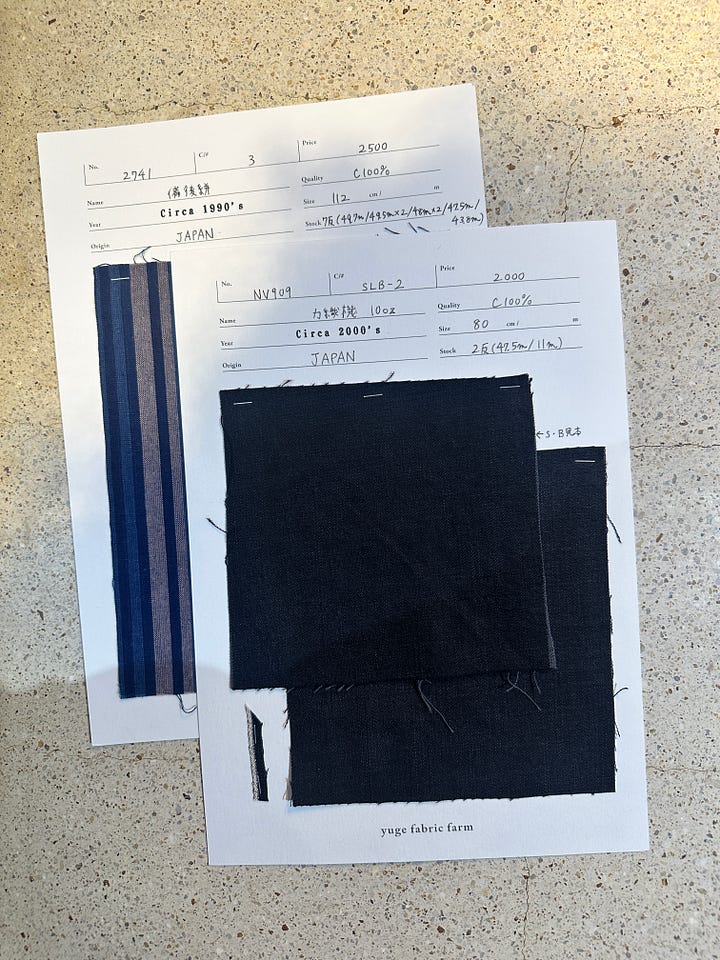
A Jean Prouvé sun shutter and rocking chair by Stefan Heiliger on display at Port Store; deadstock Japanese denim swatches at Yuge Fabric Farm in Essential Store
I’d recommend all of Naoshima and Teshima as a must-visit, as you can experience most - if not all - of the cultural sights on these islands in a few full days.
Naoshima
Art House Project: If you visit the Chichu Art Museum on Naoshima you’ll encounter a few of James Turrell’s works, but Backside of the Moon, located in the Minamidera Art House, completely subverted my expectations of his work.
Naoshima Gelato: The perfect pit stop between museum and art house hopping: gelato made with super fresh, local ingredients.
Teshima
Teshima Art Museum: An incredibly meditative space designed by Ryue Nishizawa and artist Rei Naito. No talking or phone use makes the experience feel even more peaceful. The café and gift shop structure is a mini version of the museum space, with house-made food and a beautifully curated selection of books and objects. The rice flour matcha bagel was a highlight.
Aoi Sora: I didn’t make it here, but I’d still recommend it based on the description alone: a tiny lunch spot on a fig farm, serving sōmen (cold noodles) and fig milkshakes. You can even cut fresh green onions from the field to add to your noodles.
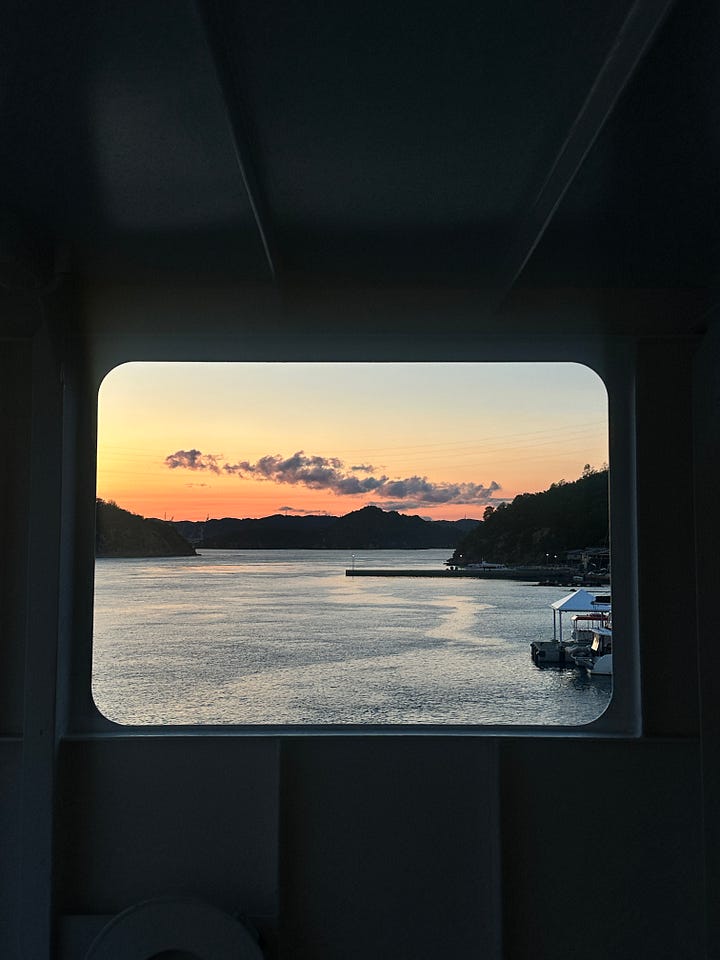

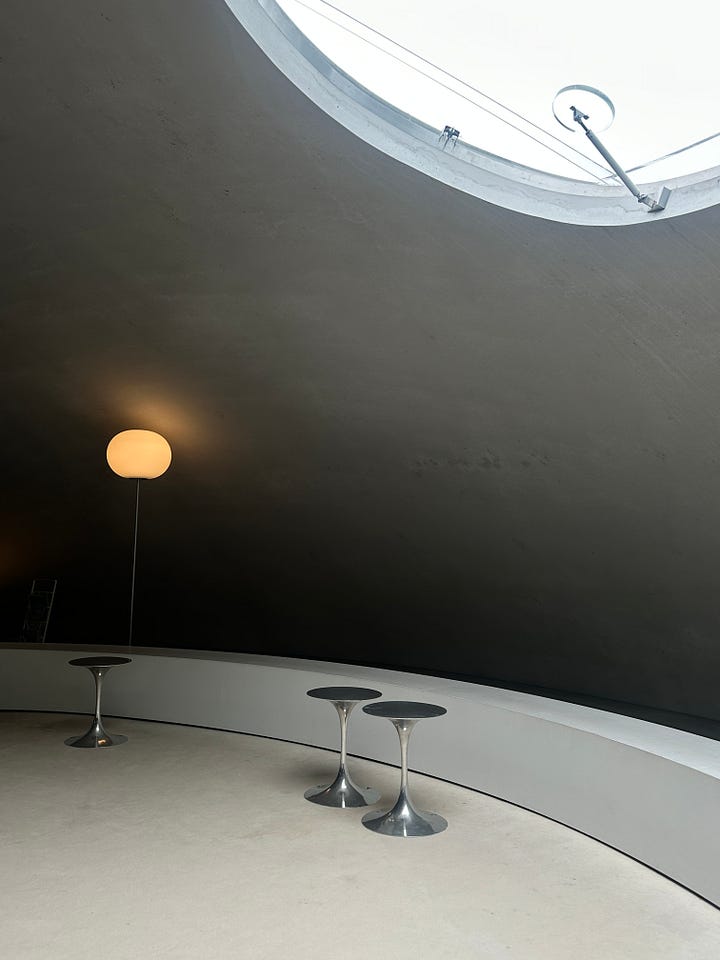
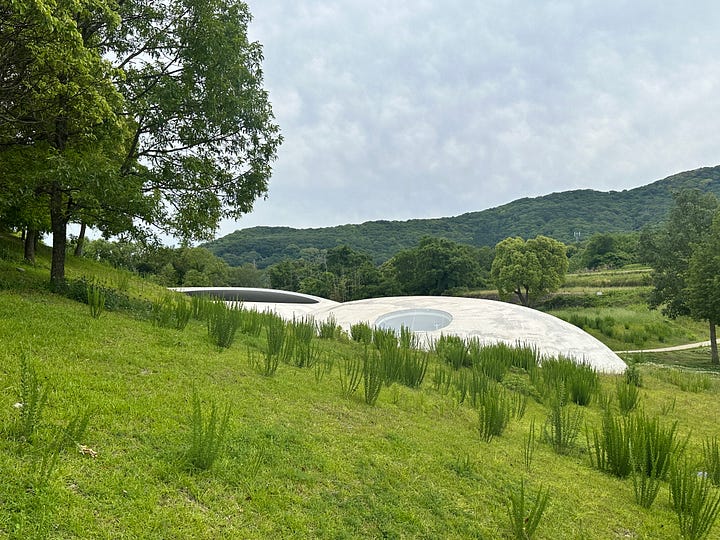
The ferry ride to the islands with surreal landscapes; Naoshima Gelato; Teshima Art Museum’s cafe interior and exterior peeking out through the fields
Tokyo
Archive Store: As the name suggests, this underground space is an archival collection and shop, with highly curated pieces from Margiela, Comme des Garçons, and others, in a space that completely blew me away.
Batoner: This space was a beautifully executed dream. The brand produces its high-quality knitwear on the floors above, and the flagship shop has little hints of the process integrated in - from a working knitting machine at the center that makes ribbons to tie onto shopping bags, to the evolving music in the store, which was composed using sounds from the knitting machines upstairs.

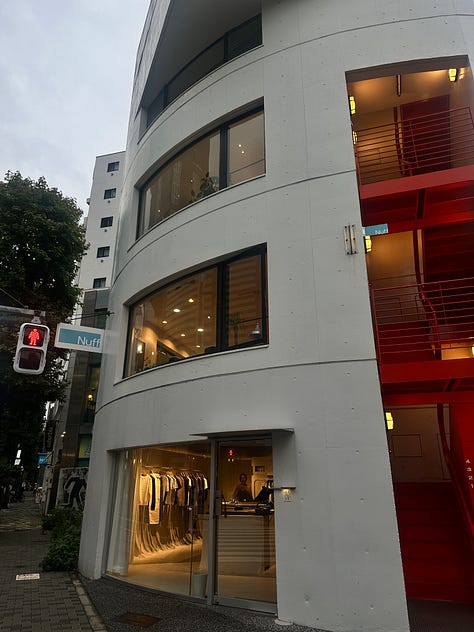
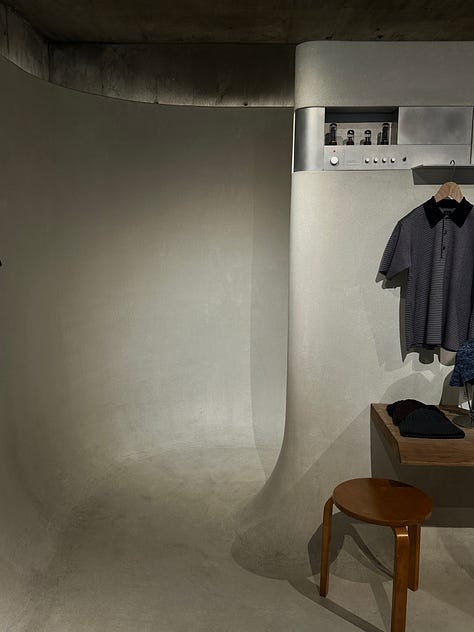

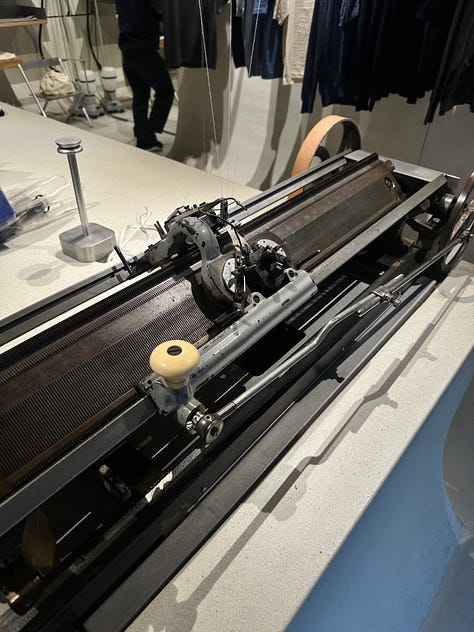
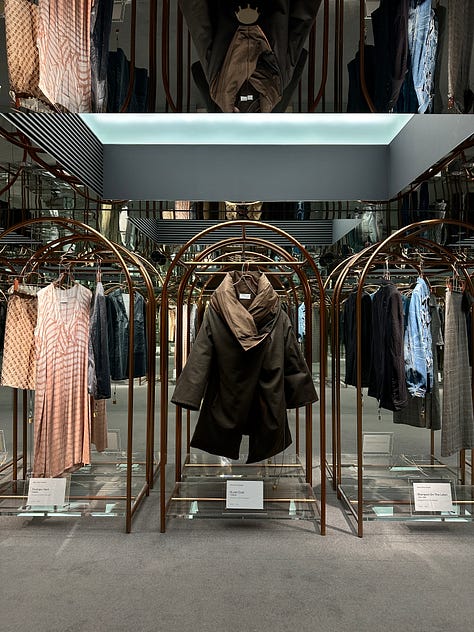
This trip left me so inspired - and nearly impossible to sum up in a single post, but I hope these recs were a good place to start.




